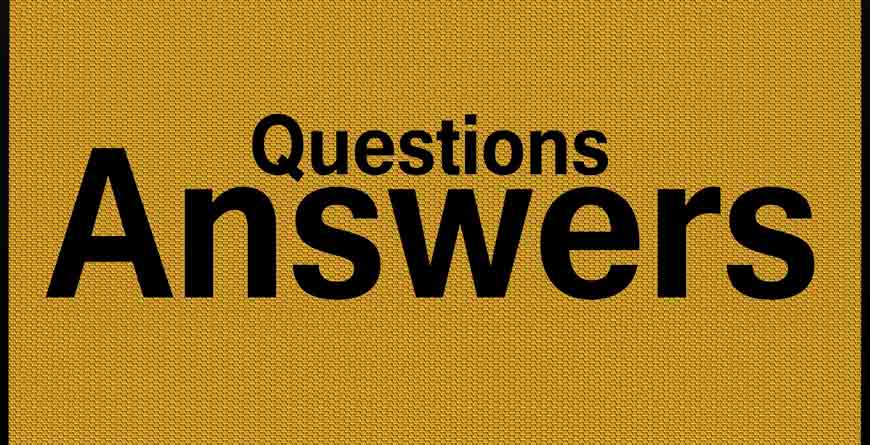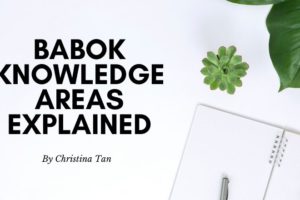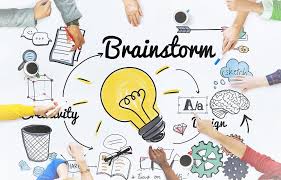
Business Analysis (BA) Interview Questions
These Business Analyst Interview Questions and Answers has been created by MindsMapped, especially to get you acquainted with the types of questions you would be asked during your Business Analyst interview. This list of questions and answers are enough for you to face different levels of Business Analyst interviews in a confident way. The list of Questions and Answers will be updated from time to time.
Frequently Asked Business Analyst Interview Questions and Answers:
Basic BA Interview Questions
1) What is a flowchart and why it is important?
Flowchart shows complete flow of system through symbols and diagrams. It is important, because it makes the system easy to understand for developers and all concerned people.
2) Define Use Case Model?
Use case model shows sequence of events and stream of actions regarding any process performed by an actor.
3) What does UML stand for?
It stands for Unified Modeling Language. There are different types of UML diagram including Decision Tree, Communication Diagram and Class Diagram.
4) Do you think Activity Diagram is important and how?
As the name implies, activity diagram is all about system activities. Main purpose of activity diagram is to show various activities taking place in an organization in different departments. Find more details on Activity Diagram click here.
5) Can you name the two types of diagrams heavily used in your field?
The two diagrams are Use Case Diagram and Collaboration Diagram
6) Do you know what is meant by an alternate flow in a use case?
It is the alternative solution or activity in a use case that should be followed in case of any failure in the system.
7) What are exceptions?
These are the unexpected situations or results in an application.
8) What are extends?
Extends are actions that must take place in a use case.
9) Name the two documents related to a use case?
The two documents are FRD (Functional Requirement Document) and SDD (System Design Document).
10) What is the difference between Business Analyst and Business Analysis?
Business Analysis is the process performed by the Business Analyst.
11) As a business analyst, what tools, you think are more helpful?
There are many but I mostly use, Rational Tools, MS Visio, MS Word, MS Excel, PowerPoint, and MS Project.
12) In your previous experience, what kind of documents you have created?
I have worked on, Functional Specification Documents, Technical Specification Documents, Business Requirements Documents, Use Case Diagram etc.
13) What INVEST stands for?
INVEST means Independent, Negotiable, Valuable, Estimable, Sized Appropriately, Testable. It can assist project managers and technical team to deliver quality products/services.
14) Define SAAS?
SAAS means Software as a Service. It is related to cloud computing. It is different from other software as you don’t need this type of software to be installed on your machine. All you need is an Internet connection and a Web Browser to use it.
15) What do you think is better, the Waterfall Model or Spiral Model?
All depends on the type and scope of the project. Also a life cycle model is selected on the basis of organizational culture and various other scenarios to develop the system. For more information on Waterfall model click here.
16) How can you explain the user centered design methodology?
It all depends on the end users. In such scenario, we develop the system with a user’s point of view. Who are the end users, what they require etc. Personas are basically social roles, performed by any actor or character. It is derived from a Latin word meaning character. In marketing terminology, it represents group of customers/end users.
17) How do you define Personas?
Personas are used instead of real users that assist developers and technical team to judge the user behavior in different scenarios, more clearly. Personas are basically social roles, performed by any actor or character. It is derived from a Latin word meaning character. In marketing terminology, it represents group of customers/end users.
18) Define Application Usability?
Application usability is actually the quality of the system that makes the system useful for its end users. System’s usability is good if it is capable of achieving users’ goals. Personas are basically social roles, performed by any actor or character. It is derived from a Latin word meaning character. In marketing terminology, it represents group of customers/end users.
19) Explain in your words, what is database transaction?
When we perform any activity in a database, such as addition, deletion, modification, searching etc. is said to be a database transaction.
20) Define OLTP Systems?
OLPT stands for On-Line Transaction Processing; such systems are capable to perform database transactions and are meant to provide good speed for database transactions. These systems are mainly used for data entry and retrieving data from the database.
21) Do you have any idea about Pugh Matrix?
Pugh Matrix is used to decide about the most optimal and alternate solutions. This technique is now a standard part of Six Sigma technique. It is also known as problem or design matrix.
22) What FMEA stands for?
It means Failure Mode and Effects Analysis. It is a failure analysis, that is used mainly in product development, system engineering and operations management. This analysis is performed to figure out various failure modes and their severity in any system.
23) What is a 100-point method?
This method is used to assign priority to different steps in a process. Each group member is supposed to assign points to different steps. In the end all the points for each step are calculated. The step having the highest points has the highest priority.
24) Do you know what 8-omega is?
It is a business framework that is mainly being adopted by firms and organizations for the betterment of their business. Its key factors are Strategy, People, Process, Technology.
25) Can you define mis-use case?
It is a term derived from use-case. Unlike use case, a mis-use case is something that shows -what kind of malicious activities can be performed by an actor that may result in system failure.
26) What is SQUARE stands for?
SQUARE stands for Security Quality Requirements Engineering. It is one of the software engineering steps that mainly focus on documenting the security requirements of the system.
27) What is Pareto Analysis?
It is a decision making technique, also known as 80/20 rule. It is used for quality control and defect resolution. It explains few factors that can be responsible for big problems. It is named as 80/20 rule, because as per this rule, 80 % effects in the system, arises from 20 % causes.
28) Do you have any idea about Agile Manifesto?
Agile Manifesto is a guide for software developers about the development principles to ensure iterative solutions.
29) What BPMN stands for?
It is Business Process Model and Notation. It is a graphical representation of business processes.
30) Define BPMN Gateway?
BPMN Gateway is a processing modeling component that is used to control flow of interaction, sequence of processes.
31) Name the five basic elements’ categories in BPMN?
They are Flow Objects, Data, Connecting Objects, Swimlanes and Artifacts.
32) Have you ever used Kano Analysis in your previous jobs and how do you define it?
Yes, I have used Kano Analysis in one of my previous jobs. Kano Analysis is used to analyze a system in terms of its requirements to identify its impact on customers’ satisfaction.
33) How many key areas are there in a Kano Analysis?
They are three in number, namely as Unexpected Delighters, Performance Attributes and Must Have Attributes.
34) Define Pair-Choice Technique?
The pair-Choice Technique is used to give priority to various items in a process. It is mainly used when distinctive stakeholders are involved in the project. This technique asks from the group to compare each item with the other and select the one having highest priority.
35) Do you have suggestions to make an effective use-case model?
Yes, I would suggest making two separate diagrams. One serves as a use-case and the other serves as an actor diagram. So that we can highlight all the possible activities in a use case & in actor diagram and then we can merge both the diagrams to get an effective use-case diagram.
36) How many types of actor can be there in a Use-Case?
There are primary and secondary actors. Primary actors start the process and secondary actors assist them. Moreover, actors can be of four types such as Human, System, Hardware and Timer.
37) Define BCG Matrix?
The Boston Consulting Group (BCG) matrix is developed to analyze several of business processes and new product offerings from companies. It is a useful tool that can be used in portfolio analysis, strategic management, product management, and brand marketing.
38) How can you differentiate between pool and swimlane?
A swimlane is related to group activities on an activity diagram while a pool is dedicated activity to a single person.
39) Differentiate between Fish Model and V Model?
Fish model is comparatively very costly and time consuming, while, V model requires less time and cost. Moreover, Fish model is used when there were no ambiguities in the customers’ requirements. Otherwise, other model is preferred.
40) How do you manage frequently changing customers’ requirements while developing any system?
As a business analyst, I would develop a document stating clearly that no change will be accepted after a certain period of time and get it signed by the user.
41) Define Use Case points?
Use Case points are used to evaluate the cost of work done to develop the system.
42) What does PEST stand for?
It means Political, Economic, Social, and Technological. It is used to analyze business environment, in which it has to be operated.
43) Name the four key phases of business development?
They are Forming, Storming, Norming, and Performing.
44) Define Benchmarking?
Benchmarking is about measuring performance of an organization to compete in the industry. In this process a company may measure its policies, performance, rules and other measures.
45) What do we mean by SWEBOK?
It means Software Engineering Body of Knowledge.
46) What do you know about GAP Analysis?
It is a process of comparing and determining the difference between two things or processes.
47) Define Agile?
Agile is basically a technique that uses several light-weight methodologies such as Rapid Application Development (RAD), Extreme Programming (XP) and SCRUM. All these methodologies focus on the development of iterative solutions. Find how Agile is different from Waterfall model here.
48) Define Scrum Method?
It is one of the agile methods, used to develop iterative information systems. In this method a small team works on the assigned tasks for a time period of 30 days usually.
49) What does JAD stand for?
It means Joint Application Development.
SDLC Interview Questions
50) What is SDLC?
Software Development Life Cycle (SDLC) is a framework, which defines tasks that need to be performed at each and every step of software development lifecycle. SDLC consists of a detailed strategy about how to develop, and maintain specific software. The lifecycle defines a procedure for improving software quality and the overall software development process.
51) Why is software development life cycle (SDLC) important?
SDLC acts as a guide for the project and offers a flexible way to manage changes in the project. SDLC stages describe key schedule and delivery points, which ensure well-timed and precise delivery of the product to the client.
52) What are the different phases in SDLC?
SDLC has 5 phases:
- Requirement & analysis
- Design
- Coding
- Testing
- Maintenance
53) What is SDLC model?
SDLC model explains implementation of a strategy within a project. It explains the different processes and phases that would be done throughout the project to deliver the desired output. There are different types of SDLC model that help to manage projects according to requirement.
54) What are the most well-known SDLC models?
Some of the well-known SDLC models are:
- Waterfall Model
- Iterative Model
- Spiral Model
- RAD Model
- V-Model
- Agile Model
54) Describe waterfall software development life cycle model?
Waterfall model is a non-iterative and sequential SDLC model which details flowing of phases downwards one by one. In waterfall model new phase is not started until and unless the previous phase is completely done. Waterfall model consists of 5 phases:
- Requirements gathering
- Design
- Implementation
- Testing
- Maintenance
55) Briefly detail the phases of the waterfall model.
- Requirements Gathering: Each and every requirement is gathered and analysis is done for the complete system. To know about Business Requirement Document, click here.
- Design: After completion of the requirements gathering phase, different design models are made for the system.
- Implementation: Implementation of the project is initiated after designing of the model is completed.
- Testing: Once project is implemented, testing of the entire system is done.
- Maintenance: After running a successful test phase, support/maintenance of the product is done.
56) Explain the advantages of the waterfall model.
Advantages of the waterfall model are:
- Planning is not required
- Works perfectly for small projects
- Requires less budget as planning is less
- It is the quickest way to deliver product
57) Explain disadvantages of waterfall model are:
- It is Inflexible
- Making new changes is very hard
- In waterfall model client gets the whole product when it’s completely ready.
- It is not suitable for large projects and where goals are not crystal clear.
58) Explain when to use the waterfall model.
Waterfall model can be used when:
- Requirements of the client is clear and fixed.
- There are no confusion about the requirements from any party.
- Client has confidence in the organization.
- The organization has working experience of similar projects.
- The project is small.
59) Describe V-Shaped software development life cycle model.
V-shaped model is an extension of waterfall model. In waterfall model phases move downwards, whereas, in V-shaped model phases are upwards after completion of coding phase to create the V shape. It details relationship between each phase of software development life cycle and its testing phase.
60) Briefly describe the phases in the V-Shaped model.
Phases of V-Shaped model are as follows:
In the V-shape model, verification phases are on the left side. V-shape model consists of:
Requirements Analysis: All the requirement is collected and analyzed to understand the problem and propose a solution.
System Design: Analysis of the gathered requirements is done by the engineers and they propose different ways the system can be developed.
Architecture design: Systems architecture consists of different modules, showcasing relationship and communication b/w them.
Module design: Module design details about each of the individual modules in a very detailed manner.
Coding: Coding is at the very bottom of the V-shaped model. In coding phase each of the designed modules are implemented using codes by the developers.
In V-shape SDLC model validation phase is at the right side. It consists of:
Unit testing: Independent modules are tested in the unit testing phase.
Integration testing: All the independent modules are tested to validate interface and find errors in them.
System testing: Entire system is tested by keeping in mind the requirement of the client.
User Acceptance testing: This is the final phase, where client/user himself checks the performance of the system.
61) What are the advantageous of V-Shaped model?
- It is very simple and easy to use.
- All phase has clear and fixed requirement and goal.
- It has higher chances of success validation processing starts in the beginning itself.
62) What are the disadvantages of the V-Shaped model?
Disadvantages of V-Shaped model:
- V-shaped model is inflexible.
- It is very hard to make changes in requirements
- Prototype is not available for V-shaped model
- Its implementation requires skilled resources
63) When the V-Shaped model should be used?
V-shaped model should be used under below mentioned circumstances:
- It should be used on projects that are small or medium.
- It should be used for projects that have clear requirements
- It should be used when you have technical resources
64) Describe prototype software development life cycle model.
In prototype model refinement and reviewing of the product is done on the continuous basis until acceptable product is created and is ready for delivery.
65) Briefly describe the phases in the Prototype model.
Phases in prototype model:
- Identification of requirements to begin with: Collect some of the crucial requirement that define need of the system including main input and output information.
- Develop initial prototype: Create a basic output which consist of UI screens.
- Review the prototype: Client or end users examine the prototype and give feedback for improvements or enhancements in the product.
- Revise and enhance the prototype: Changes in the product is based on the feedback that is received from end user.
66) What are advantages of the prototype model?
Advantages of prototype model are:
- This model helps to increase customer’s confidence as programmers and customers are continuously in contact with each other.
- It is very flexible, as changes in requirements can be incorporated easily with all the new review received from clients.
- In porotype model users and developers are able to understand the system in better way.
- In this model, user is not required to receive training, since he has been using the product from the very beginning.
67) What are the disadvantages of the prototype model?
Disadvantages of the prototype model are as follows:
- Giving more attention to the prototype can mislead programmers from understanding the original desired system.
- Client or end user may get confused
- Programmers may misunderstand objective of the end users.
- It is very expensive as prototypes requires a lot of effort and time.
68) Explain when to use the Prototype model.
Under following cases Prototype model should be used:
- When the system needs a lot of interaction with the end users.
- During development process itself, end user come to know about most of the functionalities of the product.
- Prototype modeling is very useful for creation of highly interface systems.
69) What is rapid application development (RAD) software development life cycle model?
Rapid application development or commonly known as (RAD) is a software development methodology that utilizes minimal planning in favor of rapid prototyping.
70) Briefly describe the phases in the rapid application development (RAD) model.
Phases of Rapid Application Development (RAD):
Business modeling: Information flow is found between different business functions.
Data modeling: All the information collected from business modeling is utilized to define data objects that are required for the business.
Process modeling: Data objects defined in data modeling are converted to achieve the business information flow to achieve some specific business objective. Description are identified and created for CRUD of data objects.
Application generation: In this phase various automated tools are used to create code from the designed models.
Testing and turnover: In the final phase all the components and its interfaces are tested.
71) What are the advantages of rapid application development (RAD) model?
Advantages of RAD:
- It reduces time required for development of software.
- RAD helps in increasing reusability of components
- Quick reviews are delivered.
- RAD encourages end user feedback
- Owners of business actively participate
72) What are the disadvantages of rapid application development (RAD) model?
Disadvantages of RAD:
- It is highly dependent on team and individual performances.
- System which can be modularized can only be developed using RAD
- RAD model requires highly skilled programmers/designers.
- RAD model is highly dependent on how skillfully model is created
- Implementation cost is high, so should be only used on large projects.
73) Explain when to use the rapid application development (RAD) model.
- RAD SDLC model should be implemented when there is a requirement to design a system that can be modularized in 2 to 3 months of time.
- It should be used only if there is availability of designers for creating models and budget is high.
- RAD should be used only if resources have high business knowledge and there is a requirement to develop a system in a very short span of time.
74) What is incremental software development life cycle model?
Incremental SDLC approach suggests construction of a partial system rather than the complete system and then builds more functionality into it. Requirements and features are prioritized and categorized and then implemented in phases, each phase based on the waterfall model. The process continues till the complete system is achieved.
Click here to learn more about Business Analysis



